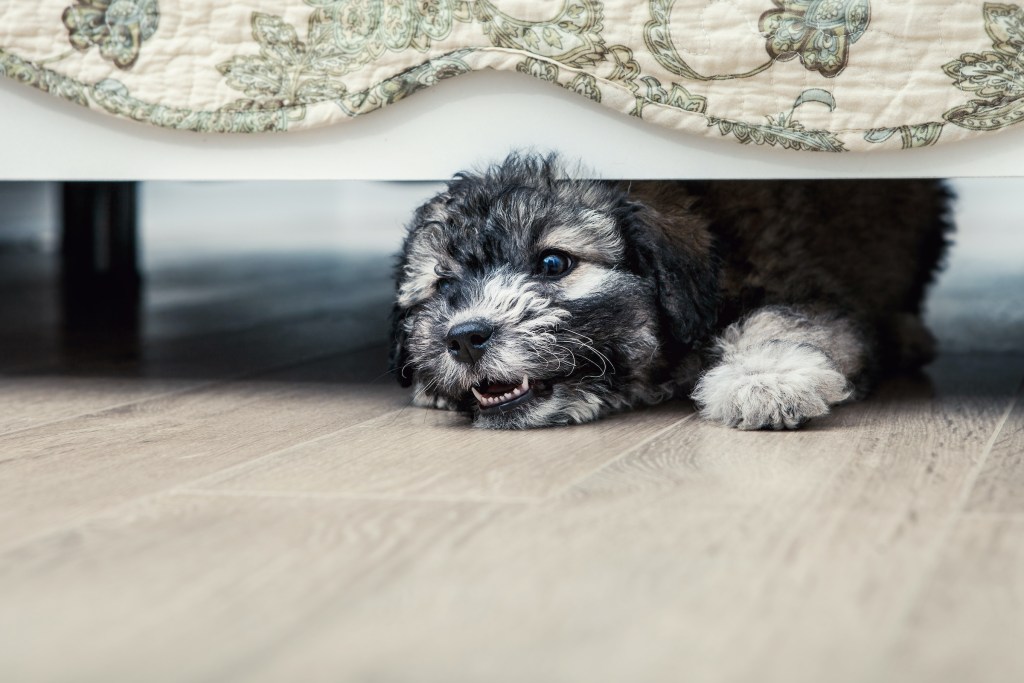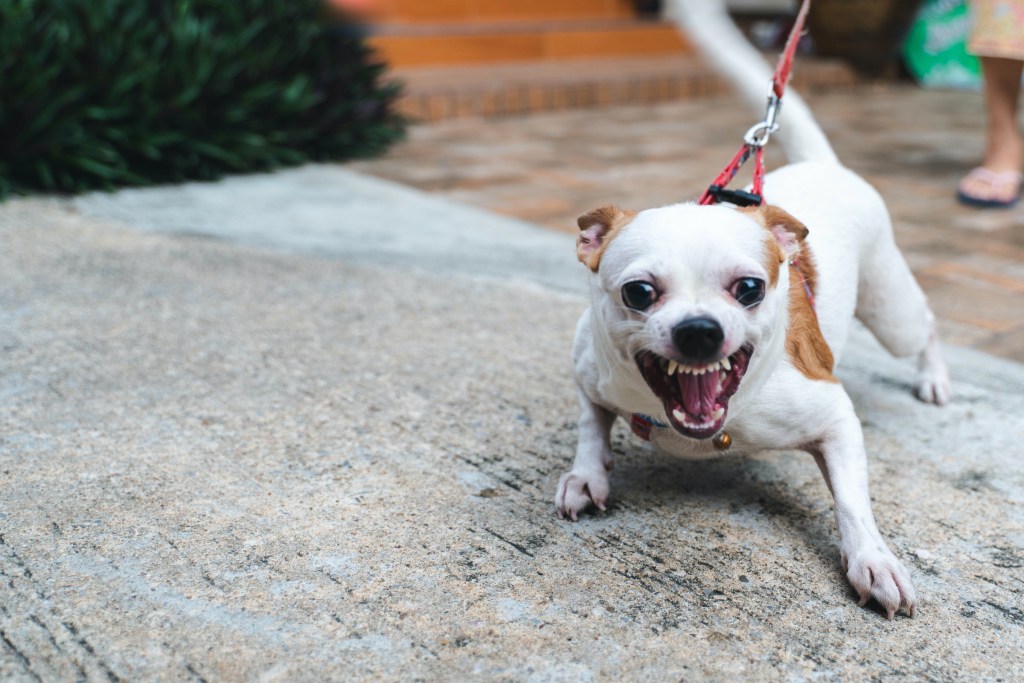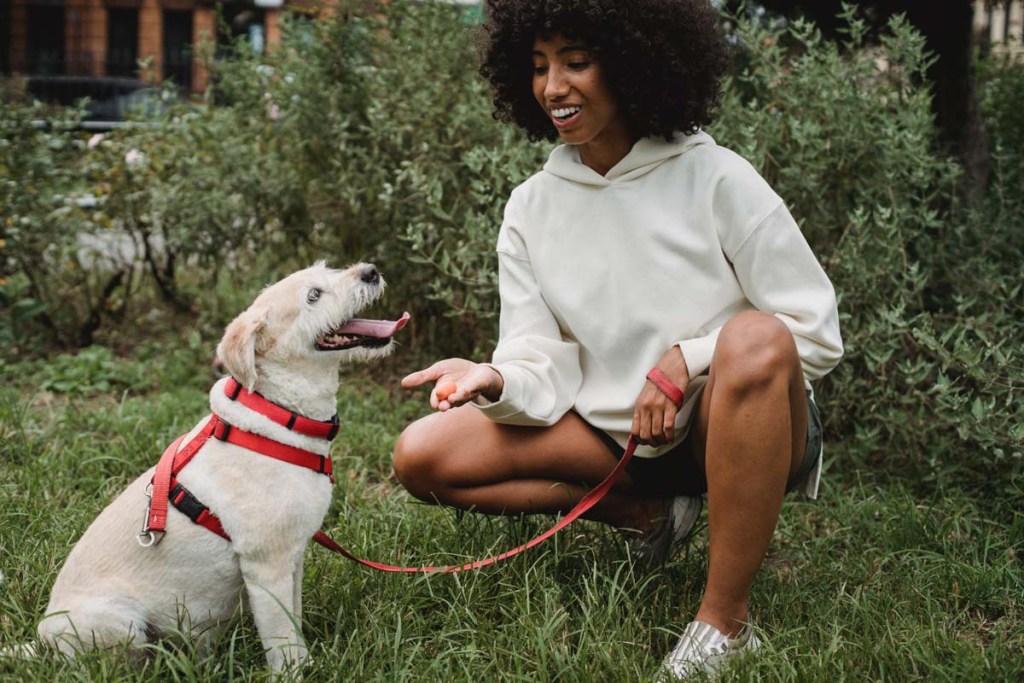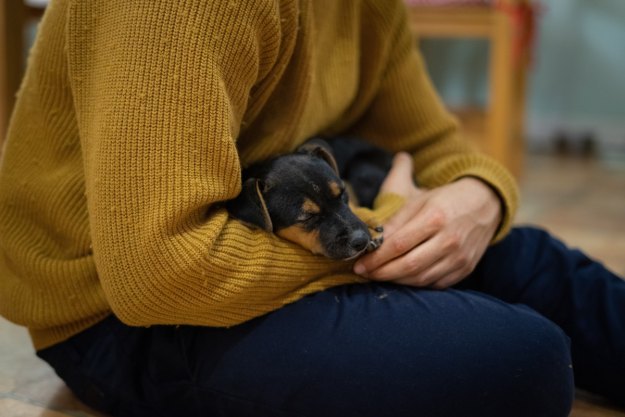When we feel afraid, uncomfortable, or even cranky, we have words to express how we feel. Dogs, on the other hand, have vocalizations and body language (as well as scent) to help them understand one another. This is how they communicate with people, too, so it’s important that pet parents learn how to interpret their fur baby’s sounds — including your dog's growling.
Learning how to stop your dog from growling may seem like a daunting task, but it is 100% doable. Any pet parent can teach their fur babies better habits — it just takes some time, some patience, and a lot of treats. Before you know it, your dog will be the most polite pup you’ve ever met. Just take it step by step! Here's how to stop your dog from growling at strangers.

Why does my dog growl at strangers?
Not all cases of growling are negative; dogs often growl during play or while getting belly rubs, for example. However, you're less likely to see these “happy” growls if your pup is interacting with strangers — unless they’ve become fast friends, of course.
Most likely, notes Purina, your dog will let out either a frustrated, warning, or aggressive growl if approached too quickly by a stranger. A warning growl will sound like a deep rumbling and is not meant to indicate an attack. It’s simply a way of saying, “Please back off!” So make sure to take action before your dog gets more uncomfortable.
Frustrated and aggressive growls will sound “long, loud, and low” according to the folks at Purina. Aggressive growls are often accompanied by hackles (the hair on the back of the neck) raising. Dogs who make this sound feel threatened, and they will let you know.
You may see lunging movements, whereas frustrated dogs may run back and forth, as if anxious. A dog who barks out of frustration may actually want to get closer to say hello, though you should double-check with the person (and pet!) they want to meet before moving forward.

How to stop your dog from growling
Once you’ve identified the reason(s) for your dog’s reaction, you can work on exposing your pet to their trigger — in this case, strangers — in a new, safe way.
The American Kennel Club (AKC) recommends a combination of desensitization (gradually spending more and more time around strangers) and counter-conditioning (changing how your pup feels about strangers) training to make habit changes effective. Not only will this help your dog get used to being around humans, but they’ll truly enjoy it too.
It’s important to keep your dog calm throughout any training sessions, as adding stress will make them ineffective. After all, the idea is to show them that friendly strangers are great!
Step 1: You will need to enlist the help of a friend your fur baby hasn’t met, as well as a lot of treats.
According to the AKC, the very first step is to reward your pup for simply remaining calm in the presence of a stranger, whether they’re comfortable a few feet away or across the dog park. Make sure to reward them immediately after they notice the stranger so they can begin to make a mental association between the new person and the treat.
Step 2: Walk your dog away and then back toward the stranger to repeat this reward process.
Once your puppy begins to expect a treat, they are calm enough to move forward in training.
Step 3: Now you can get a little closer to the stranger and reward your pup just like before.
Step 4: Continue this process until your dog is comfortable at that distance, and then repeat at a closer and closer distance.
This repetitive process will let you move your dog slowly but surely toward the person until that new friend is handing your dog the treats themselves. Of course, this should all go at your dog’s own pace. If they ever seem stressed out, it’s a good idea to move back a step or two for now.

Example desensitization process
Here’s a sample of steps this process can take, courtesy of the AKC:
Step 1: When your dog is within 2 feet of the stranger, hand the dog a treat and have the stranger toss one to them as well.
Step 2: Repeat this process at 1 foot away and then when the dog is next to the stranger.
Step 3: Let your dog approach the stranger and take a treat from the ground at the stranger’s feet
Step 4: Next time, offer a treat directly from the stranger’s hand.
Step 5: As the stranger hand feeds the treat, have them gently pet the dog’s head, back, and/or chest--once the dog seems comfortable enough.
The stranger should reward the dog with another treat for being calm and cooperative.
Step 6: Gradually, the stranger should increase the amount of contact before feeding the treat.
With enough patience and love (and treats), baby steps like these will take your dog’s training further than you ever imagined. Of course, it also helps when the folks your dog interacts with know how to approach them in a friendly manner. Whether they’re helping you or you’re helping train their dog, remember: never lean over a dog or stare into their eyes, as this can be threatening. Instead, kneeling down and turning to the side is non-aggressive body language that makes dogs feel more comfortable.
Editors' Recommendations
- 5 surefire ways to keep your dog off your bed and get a good night’s sleep
- How to stop a dog from peeing in their crate for good in 5 easy-to-follow steps
- Why does my dog have a bald patch on their tail? Here are the answers you need
- Looking for signs your dog has ticks? These telltale symptoms mean you have a flea or tick problem
- Is your dog barking nonstop? Here’s how to get your noisy pup under control




